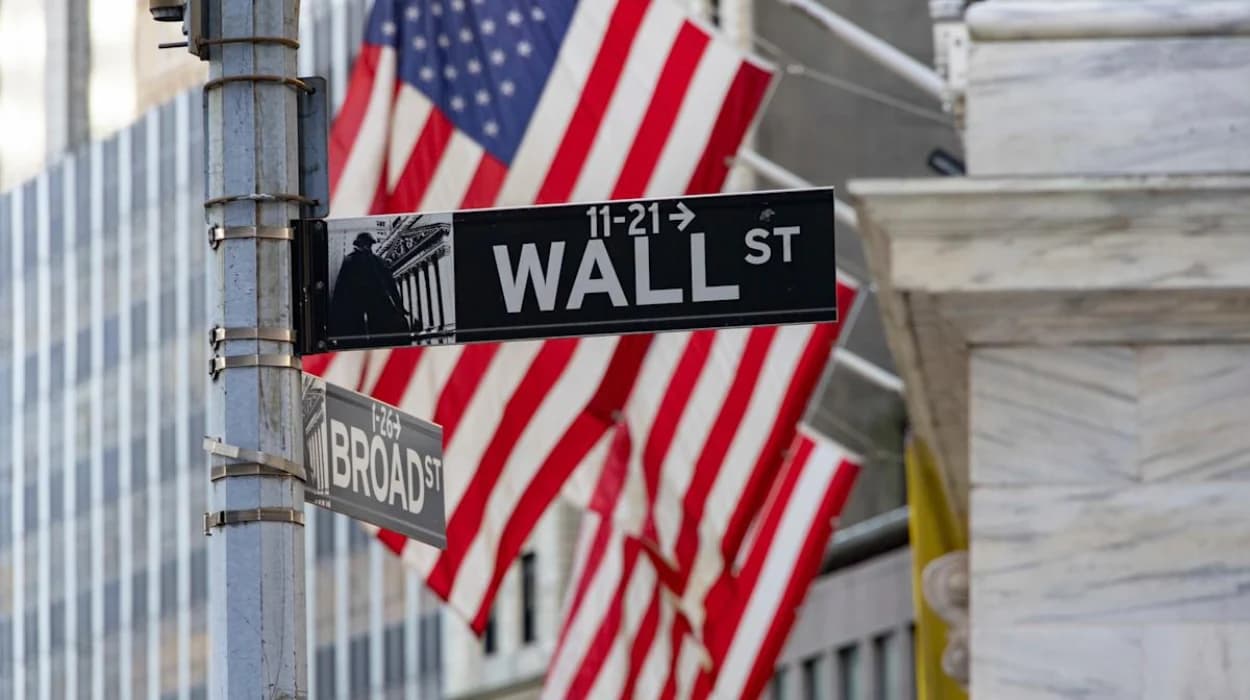U.S. equity markets continued their upward trajectory as the Dow Jones Industrial Average and S&P 500 notched fresh record closing highs on October 3, 2025, even as the Nasdaq slipped slightly. These gains underscore investor optimism fueled by advances in artificial intelligence (AI) technologies and expectations of Federal Reserve interest rate cuts, despite ongoing economic uncertainties rooted in a government shutdown and delayed labor market data.
The Dow surged by 238.56 points, or 0.51%, closing at an unprecedented 46,758.28, crossing the 47,000 mark intraday for the first time in history, a milestone reflecting sustained confidence in blue-chip stocks. The S&P 500 crept up by a marginal 0.01%, clinching a new record close at 6,715.79. In contrast, the Nasdaq Composite, which is heavily weighted with tech stocks, retreated 0.3%, weighed down notably by sharp declines in select technology shares.
Government Shutdown and Its Market Impact
The U.S. government shutdown entered its third day, leading to delays in critical economic data releases, including the highly anticipated September jobs report. This blackout has created significant gaps in economic visibility for investors and policymakers at the Federal Reserve. However, market participants took historical precedent into account, recalling that short-term shutdowns generally have limited economic impact, and instead focused on private data sources to assess economic health.
Paul Christopher, a global strategist at Fargo Investment, emphasized,
"Thursday's market behavior indicates that the legacy of government shutdowns continues to influence sentiment. These occurrences typically have limited adverse economic effects during their duration, but once the federal operations resume, the economy bounces back from those minor disruptions."
This confidence helped underpin market resilience amid political gridlock.
Labor Market's Surprising Revision and Implications for Inflation
Adding to market dynamics, a sharp downward revision in prior jobs data signaled a notable deceleration in labor market growth. New figures showed that job additions in August were revised down from initial estimates, confirming a slowing pace of hiring. This slowing labor market has increased expectations for more aggressive Federal Reserve rate cuts in the near term, potentially bolstering equities amid economic headwinds.
In the absence of official government reports, investors analyzed private sector data, including surveys from payroll firms and the Institute for Supply Management's services employment index, which contracted for the fourth consecutive month. Mona Mahajan of Edward Jones stated,
"It certainly feels like momentum is on the side of investors over the last few days,"
reflecting optimism around rate cut prospects despite weak job growth.
AI Sector's Role in Market Gains and Tech Sell-Off
Artificial intelligence developments remained a dominant force in supporting the stock rally. Nvidia’s shares reached record highs early last week, boosting the semiconductor sector and contributing to the broader market’s enthusiasm. Partnerships between tech giants like OpenAI and Japanese firms Hitachi and Fujitsu further underscored the AI growth narrative, igniting investor interest and lifting associated stocks.
However, the tech sector faced headwinds as well, with notable stocks experiencing volatility. Palantir Technologies dropped 7.7% after disappointing guidance, while Tesla and Nvidia declined by 3% and 1%, respectively, following profit-taking and concerns about semiconductor supply chain issues. Applied Materials, a key chipmaker, warned of a $600 million revenue impact linked to semiconductor export restrictions, which pressured its shares to fall 2.7%.
These mixed movements in tech stocks illustrate the fragile balance between investor enthusiasm for AI innovation and caution about macroeconomic risks and geopolitical trade challenges.
Broad Market Strength and Sector Rotation
While tech shares showed uneven performance, other sectors gained ground, diversifying market leadership. Utilities led sector gains within the S&P 500, rising 1.2%, while pharmaceutical stocks enjoyed their best week in over a decade, benefiting from strong earnings and defensive demand amid market uncertainties.
David Solomon, CEO of Goldman Sachs, commented during an industry conference,
"Mark run in, and we've significant innovation and lots of companies around, you see the run ahead of the potential."
This captures the tempered excitement surrounding the evolving technology landscape that continues to influence stock valuations.
Despite cautionary voices, the markets ended the week on a strong note with all three major indexes posting weekly gains exceeding 1%. This rally comes as investors balance concerns about a slowing economy and government paralysis against optimism for upcoming Federal Reserve monetary easing and persistent corporate earnings strength.
Looking Ahead: Inflation Data and Fed Decisions
The delayed release of U.S. inflation data due to the shutdown places added focus on upcoming economic reports that will likely steer Federal Reserve policy decisions. The personal consumption expenditures (PCE) price index, considered the Fed’s preferred inflation gauge, is due later this month and is expected to provide critical insight into inflation trends.
Given the recent jobs report revision showing slower labor market activity, market participants increasingly anticipate the Fed to lower interest rates at its meeting planned for late October, aiming to support growth amid signs of economic deceleration.
However, the dual challenge for the Fed lies in balancing this labor softness with persistent inflation that remains above target levels, especially in housing and energy costs. Investors are monitoring these data points closely, mindful that any inflation surprise could adjust the Fed’s path and market sentiment accordingly.
Market Sentiment and Investor Outlook
The prevailing market sentiment navigates between bullish enthusiasm for technological innovation and wariness of potential systemic risks. ETFs tracking AI and semiconductor companies continue to attract capital, driving impressive gains, while defensive sectors provide ballast against volatility.
Some market strategists caution that the existing rally could face correction given stretched valuations. A strategist at RA Research pointed out,
"Government shutdowns have been headline events rather than bottom-line-affecting events,"
suggesting that policymakers and markets remain confident that current disruptions will be temporary.
Overall, while some pockets of the market struggle with sector-specific pressures and regulatory concerns, the broader indices reflect underlying investor confidence fueled by strong earnings, the promise of AI advancements, and the prospect of more accommodative monetary policy.

